Abstract
An excess of self-reported neurological symptoms was found when a group of 46 men exposed to methylene chloride at concentrations below 100 ppm was compared with a non-exposed referent group. A follow-up study was then carried out to see whether there was any evidence of neuropsychological damage in the exposed men. Twenty-nine of the original group participated in this study. Age-matched controls controls were selected from among men working on a similar process but with no exposure to solvents. Each man in the study had a clinical examination; motor conduction velocities were measured in the ulnar and median nerves; an ECG was taken and a psychological test battery was designed to detect minimal brain damage was administered. No evidence was found of long-term damage that could be attributed to exposure to methylene chloride.
Full text
PDF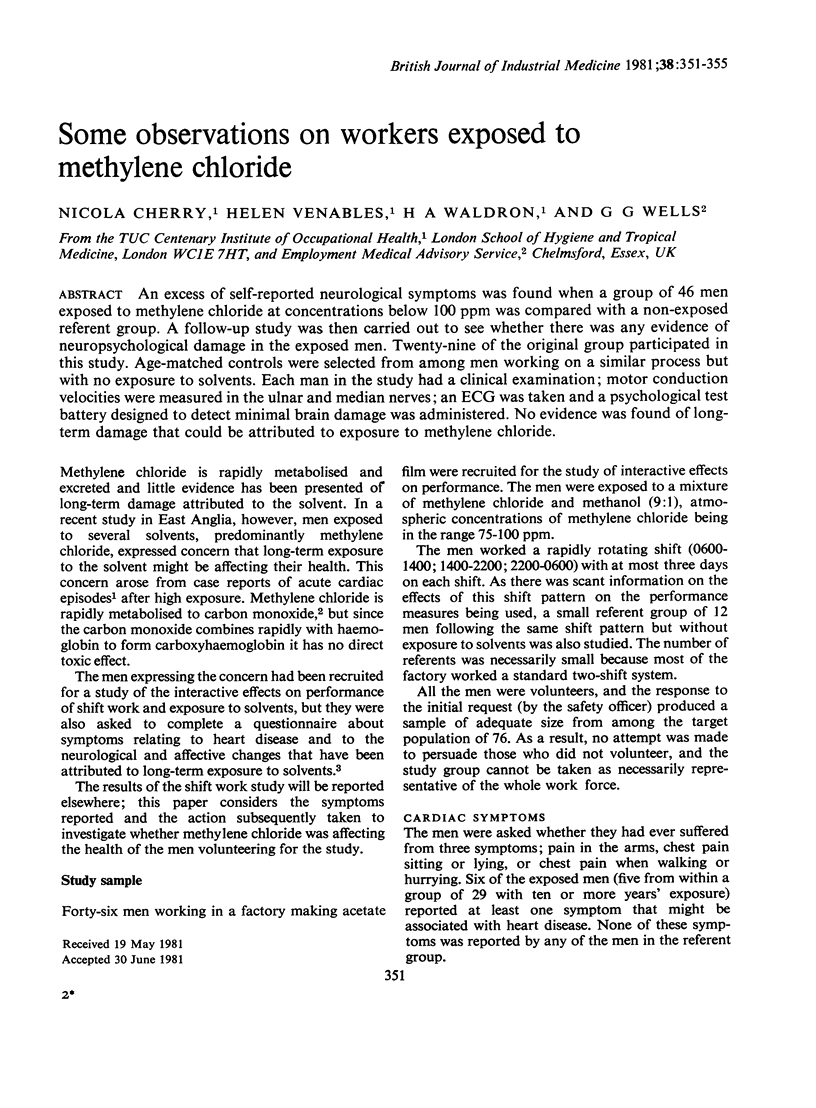
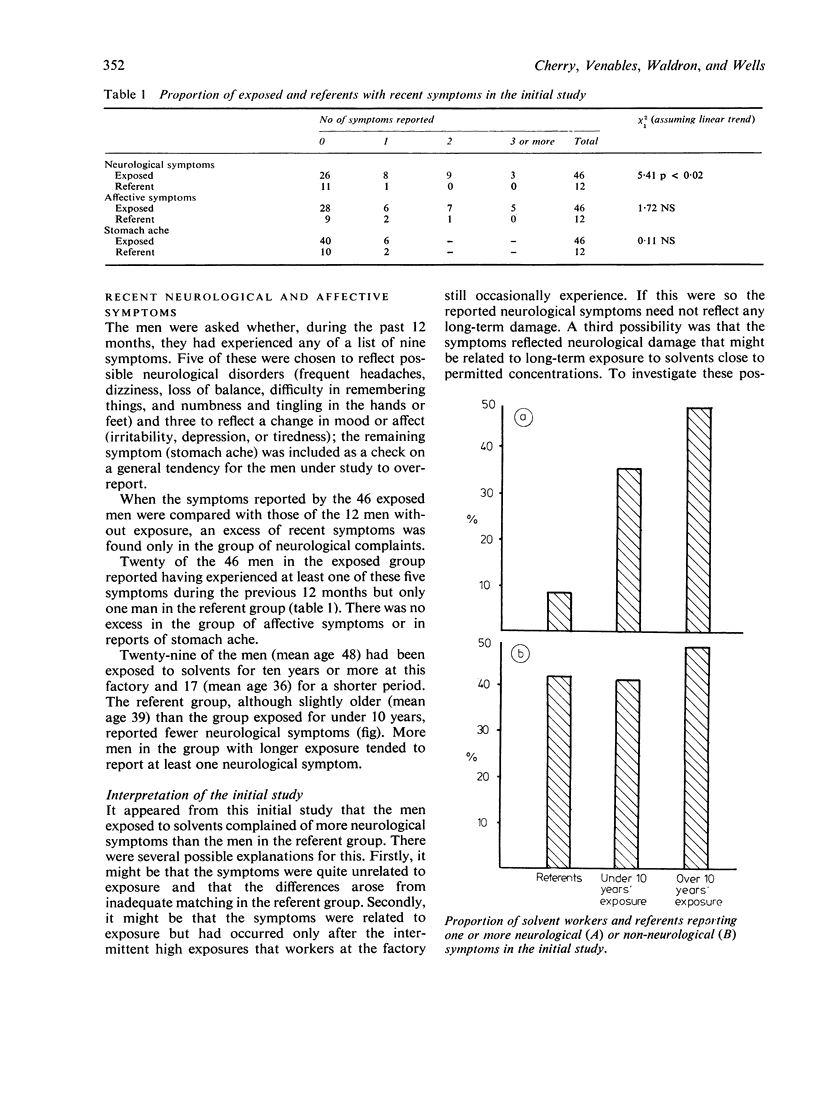
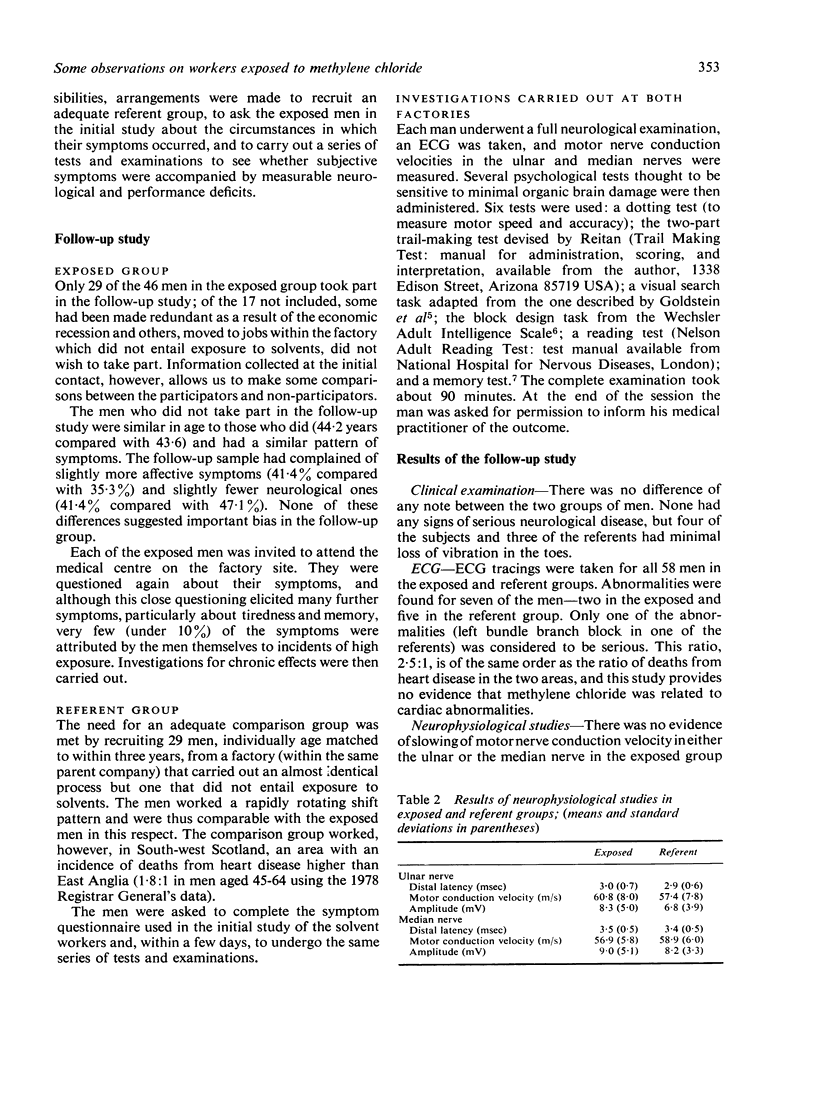
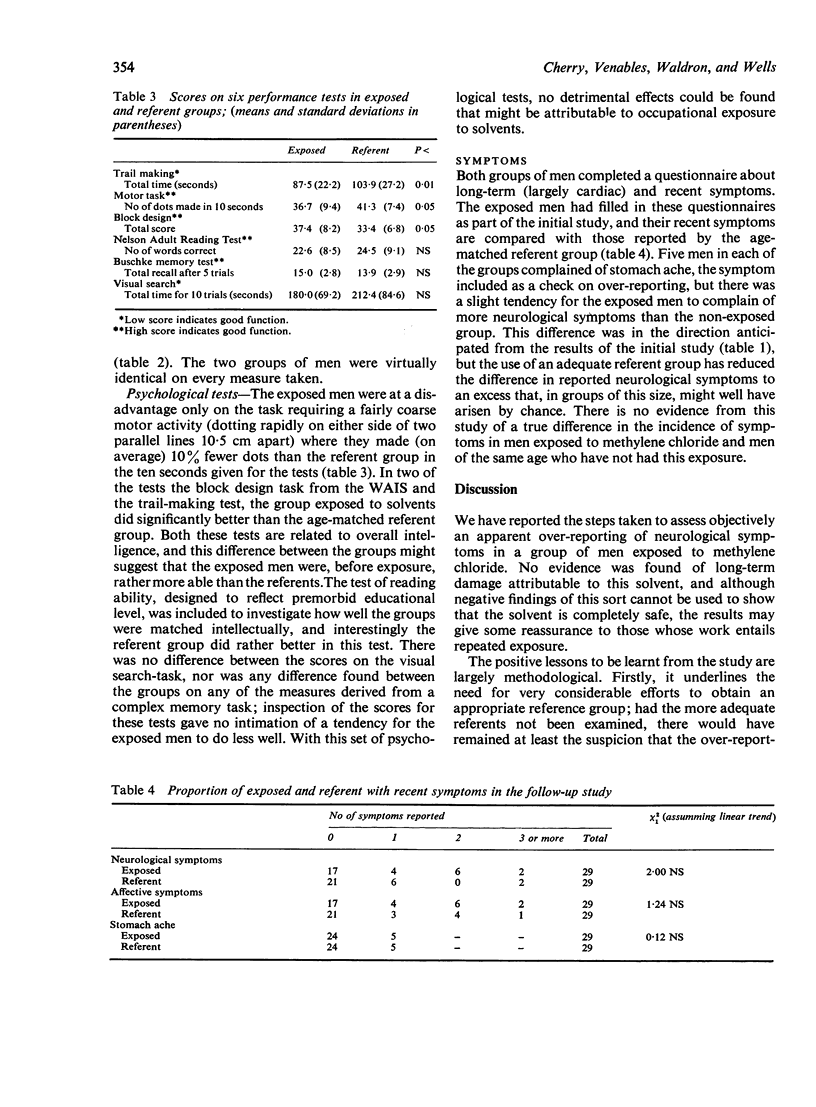
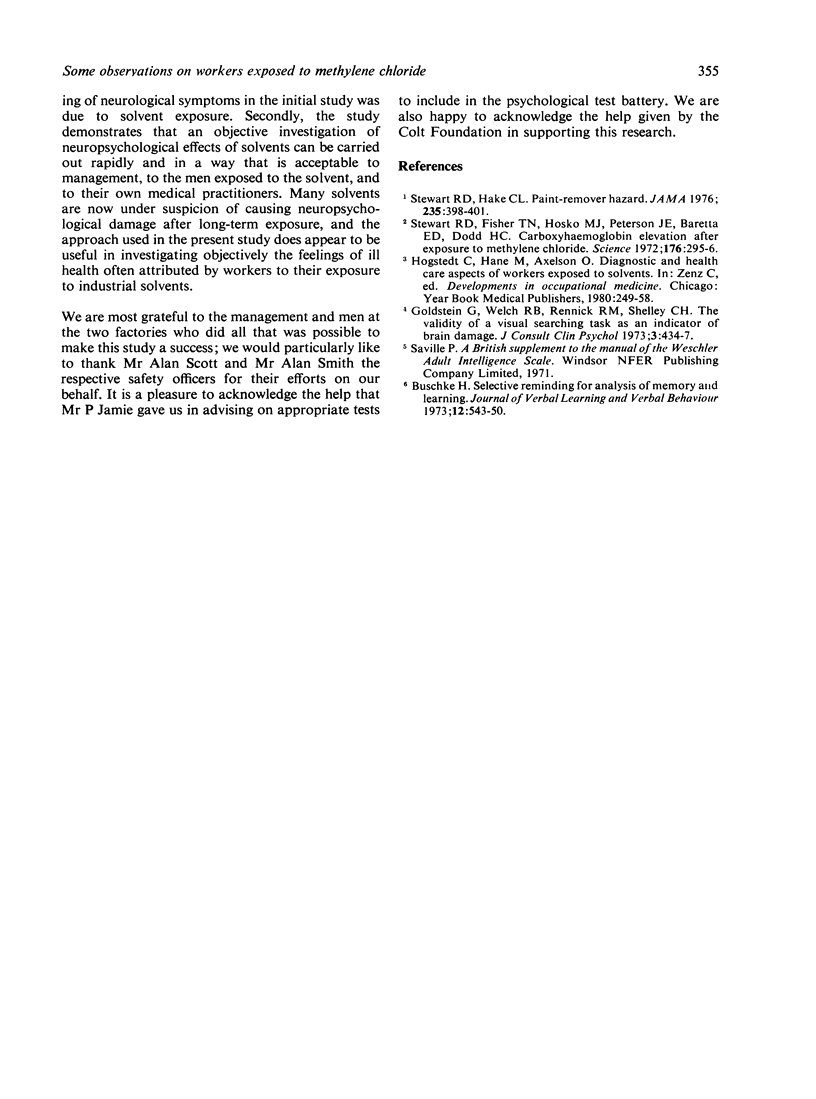
Selected References
These references are in PubMed. This may not be the complete list of references from this article.
- Goldstein G., Welch R. B., Rennick P. M., Shelly C. H. The validity of a visual searching task as an indicator of brain damage. J Consult Clin Psychol. 1973 Dec;41(3):434–437. doi: 10.1037/h0035350. [DOI] [PubMed] [Google Scholar]
- Stewart R. D., Fisher T. N., Hosko M. J., Peterson J. E., Baretta E. D., Dodd H. C. Carboxyhemoglobin elevation after exposure to dichloromethane. Science. 1972 Apr 21;176(4032):295–296. doi: 10.1126/science.176.4032.295. [DOI] [PubMed] [Google Scholar]
- Stewart R. D., Hake C. L. Paint-remover hazard. JAMA. 1976 Jan 26;235(4):398–401. [PubMed] [Google Scholar]


